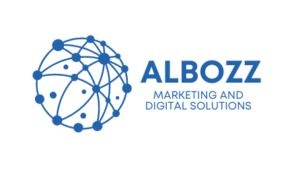About 75% of customers evaluate a business’s credibility on the basis of how their site looks. If you don’t have a modern-looking, responsive and engaging website, you might miss out on more than 90% of your online business.
From keeping the visitors hooked with an interesting copy to planning the layout and visual content of your website, there is a lot that goes into the designing process. To help you out, check out this brief guide on how you can engage your visitors with some of the best website design practices.
What does an engaging website mean?
The three things you should know about designing an engaging website are; give people something unique, create a connection between brand and consumer, and convince people why they should stay on your site and take an action.
An engaging website is one that keeps its readers coming back for more. It pleasantly surprises them and sparks their curiosity, making sure that they don’t forget about it. It connects with the visitor’s emotions in a way that makes them care about what you say and become personally invested in your brand.
Understandably, this can be tricky to achieve. That’s why you need professionals to develop a design that will retain visitors and ultimately lead to higher conversions.
Elements of an engaging website design
A great website design creates a lasting impression. It inspires visitors and sparks an emotional response towards your brand. Here is what you need to take your website design from vain to a lead conversion machine.
Simplicity
When it comes to web designs, the less clutter, the better. Simple designs are more appealing than fancy ones for two reasons;
First off, simple websites tend to load faster because they have less data and therefore, are small in size. Fast loading immediately makes your website more attractive and significantly improves the user experience.
Secondly, simplicity promotes easy navigation. Your visitors should be able to explore your content and get the information they need without any hassle. After all, the visitors won’t stay on your site if they can’t find what they are looking for easily.
Wisely used white space
In web design, white space (or negative space) is the area between elements of a design a.k.a the empty space.
As humans, we are attracted to white space because it relieves the eye from the strain of processing a bundle of information all at the same time and helps avoid information leaks in our minds.
Website designers use white space as a visual tool to give things their own breathing room.
White space compels visitors to slow down and take a closer look at the actual content that needs to be focused on. It allows you to highlight important text and images amid a bunch of other design elements and retain the visitor’s attention for a long time.
Artificial intelligence
Artificial intelligence, such as chatbots, are a great simple addition to your website. They can be used as virtual assistants that provide information to your website visitors on request.
Also, it can help you scale your conversion rate by talking to customers on your website and answering questions they might have. This allows your website to become more interactive and engaging.
Clear CTA
Clear calls to action are a key component of any visitor engagement strategy. You need visitors to know what to do when they land on your page and when they see your content.
The best call-to-action (CTA) design will carefully guide visitors through the process of completing a conversion goal. That’s why you need them to be easily accessible as they can make or break your online sales.
Correctly used colour psychology
Colour plays a very important role in persuading your visitors to perform certain actions. It can persuade them to purchase a product, get in touch with your company or completely drive them away.
We have repeatedly spoken about colour psychology, which refers to the way in which colours affect humans emotions, attitudes, and behaviour. It is based on the psychological effects that colours can have on your brain.
Your website colours are so important that if you don’t get them right, none of the other elements would make complete sense.
Your site’s colour scheme should directly reflect your target segment. For example, if you are dealing in the luxury segment, you might benefit from using gold or royal purple as they are more likely to catch your customers’ eyes.
Similarly, people shopping for a new car are likely to be attracted by bright red colours since red represents action, energy and excitement. So, you could work shades of red into your web design.
Bear in mind that your website’s colours should be the same as your other marketing collateral. Doing so will allow you to avoid a crash of identities and promote brand uniformity among your customers.
Video content
Video content delivers results in two ways: increased interaction and better search engine ranking. It is the key to genuine brand engagement and a better user experience.
Videos can be used to show how a product functions, its uses in different situations, or even customer reviews and testimonials. But above all, they can be used to add some flare and credibility to your website.
Easy shareability
Adding social media sharing buttons makes it easy for your readers to share your content through Facebook, Twitter, Pinterest and email.
When people share your content, they help you increase awareness of your brand and the products or services you offer and build trust and credibility in the process.
More importantly, they bring in more people like them to your site – which is exactly the niche you are looking to influence.
Your website design should reflect the purpose of your business while addressing your target market’s needs. So, if you are stuck in a rut, Identify Digital can help you! Our design experts can revamp your current site design or make a new one from scratch to bring your brand vision to life. Let’s get in touch.

